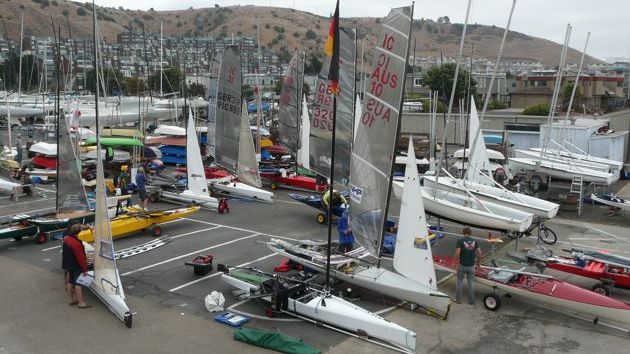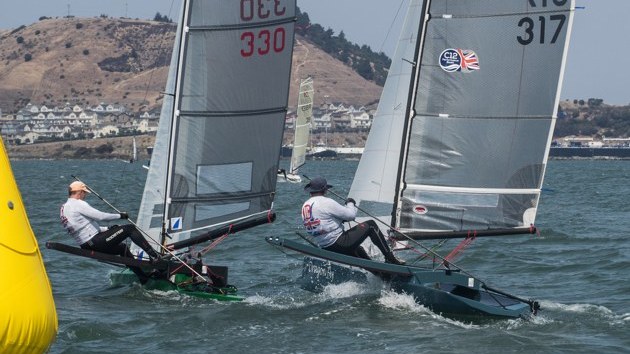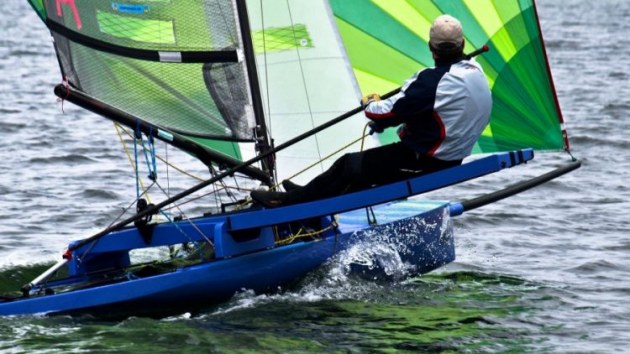The Decked Canoe Archives
Assembled by Tim Gittins
A Builder of Canoes
A short sketch of the life and work of the master craftsman W. F. Stevens
by F. H. Froling ~ Originally printed in "Forest and Stream", June 1921, page 265
The world-famous canoe-builder, W. F. Stevens, celebrated the seventieth anniversary of his birth at his home at Boothbay Harbor, Maine, on November 17th, 1920.
He was born at Arcadian Mines, Nova Scotia, where his parents had moved from Vermont. When he was nine years old, the family returned to the United States and settled at Woolwich, Maine. After a few years the boy went to Bath, where he served his apprenticeship with Samuel R. Baily, the well-known carriage maker.
At the age of sixteen, young Stevens built his first sailboat, an achievement that would have been a credit to an adult. Being fond of outdoor life and sports, he became an oarsman and won many sculling contests on the Kennebec River. Thus he became interested in the building of high grade racing shells.
In 1878, he moved from Bath to Lowell, Mass., and from there to Portland, Maine, where he worked about a year with Mike Davis, the noted shell builder and sculler. He returned to Lowell in 1890, where he became associated with Edward Williams, also a prominent builder of rowing shells.
While in Lowell, Stevens came to the notice of the late Paul Butler, who was considered the world's greatest authority on the sailing and building of canoes. From then on, he built all the canoes designed and owned by Mr. Butler, and soon among canoeists the names of Butler and Stevens became inseparable.
From Lowell he again went to Bath in 1898, where he built several of his most famous boats. Here he remained until 1906, when he went to Marblehead, Mass., to engage in canoe building with W. Starling Burgess, well known naval architect and sportsman. After two years at this place, Stevens retired to a farm at Boothbay Harbor, Maine, where he now lives. At the time of his retirement he was recognized as the foremost canoe builder, not only in the United States and Canada, but throughout the world. Having decided to retire, he built no more canoes for several years. However, in 1913, when he consented to build still another boat, the zenith of his career was reached in the designing and building of the world-famous "Mermaid" for Mr. Leo Friede, of New York City.
DURING the winter of 1912-13 excitement was created in canoeing circles by the announcement that the New York Canoe Club had received a challenge for the International Sailing Trophy, held by that club. The challenge had been sent by the Gananoque Canoe and Motor Boat Club of Gananoque, Ontario, Canada, in behalf of Ralph Britton, Canada's foremost canoe-expert. During the summer of 1912 Britton had won every sailing race at the American Canoe Association meet on the St. Lawrence River. Among other prizes he had captured the National Sailing Trophy, emblematic of the championship of the United States and Canada.
Encouraged by this, was but natural that the Gananoque Club, of which Britton was an active member, should issue a challenge for the International Cup. This prize, originally offered for competition in 1886, by the New York Canoe Club, had never been won by any foreign contestant, but when a challenge was received in behalf of the undefeated Britton, everyone interested in canoe sport realized that the coveted prize was in jeopardy. The International Challenge Cup is to canoeing what America's Cup is to yachting, and is symbolic of the championship of the world.
Leo Friede, at that time almost unknown as a canoeist, came to the defense of the Trophy by requesting Stevens to design and build a canoe capable of not only defeating the fastest American canoes in the elimination trials, but also speedy enough to defend the national honors against the Canadian challenger. Stevens found no easy task before him, but his genius asserted itself, and the result was the "Mermaid," a perfect creation from the viewpoint of naval architecture. In the trial races, to the astonishment of all, the "Mermaid" outsailed a fleet of the fastest canoes of the American Canoe Association.
As a result, she was selected to be the defender, and, sailed by her skilful owner, she defeated easily the Canadian challenger in two straight races. Again in 1914 a second challenge was sent by the same club, this time also nominating Britton. At great expense the Canadians had built several canoes from which to choose a challenger, but the fastest one among them, the "Tomahawk", was conclusively defeated by the speedy "Mermaid", which again had been the choice of the New York Canoe Club in selecting the defender.
Besides winning both of these international events, the "Mermaid" has won the National Sailing Trophy several times at the American Canoe Association regattas, held annually on the St. Lawrence. In the same canoe Mr. Friede has also won the Mystic Cup, a perpetual canoeing prize offered by the Winchester Boat Club of Winchester, Mass.; likewise the Eliot Sailing Trophy, representing the championship of the Atlantic Division of the American Canoe Association.
Only twice has the "Mermaid" met with noteworthy defeat. First, in the fall of 1913 and again in 1919, both times while contending for the Union Boat Club Challenge Trophy on Charles River Basin, Boston. The winner in both series of races was the "Damosel", sailed by James Newman, of Leominster, Mass., a most skilful and resourceful canoeist. The "Damosel", however, is also a Stevens production. Built more than twenty-five years ago, she is still in excellent racing condition, a fact that demonstrates the unusually high grade construction and workmanship found only in a Stevens built canoe.
AMONG the many sailing canoes built by Stevens is a long list of noted prize winners. Famous among these are the boats built for the late Paul Butler, son of General Butler of Civil War fame and Governor of Massachusetts. They are the "Bee", "Fly", "Wasp" and "Bug." With the "Wasp", Mr. Butler successfully defended the International Challenge Cup in 1895 against Charles E. Archbald, of Montreal, Canada.
Other well known canoes built by Stevens are the "Bat" for William J. Ladd, of Los Angeles, Cal., and the famous "Banshee" for Hermann Dudley Murphy, Esq., a canoeist of international reputation. The "Old Glory" and "Uncle Sam" were built for Hon. Thomas W. Lawson, of Boston. The "Uncle Sam" was raced in England by Mr. Murphy in 1901, in an unsuccessful attempt to win the British Sailing Challenge Cup. The "Yakaboo", in which Frederick A. Fenger cruised 800 miles from Grenada to Virgin Islands, in the Caribbean Sea, was also the work of Stevens.
While at Marblehead Stevens built the "Twilight" for W. Starling Burgess, of Boston, and the "Vim" for H. Matt Ohlmeyer, of the Knickerbocker Canoe Club, New York City. These two canoes, built in 1906, are still ,in every respect, as good as new and are wonderful examples of canoe construction.
The famous "Mermaid", as stated, was built in 1913. This canoe proves the exception to the statement that there is no perfection in art.
The "Kabeyun III", an improvement on the "Damosel", was designed and built by Stevens in 1915 for Edwin Ginn of Winchester, Mass., and in some respects may be considered Stevens' most remarkable design. In 1916 he also designed and built the "Nymph" for H. H. Davis of Schenectady, N. Y. The last canoe to go out of Stevens' shop is the "Doris III", a radical departure of cruising type and built in 1918 for Mr. Yngve Froling of Gothenburg, Sweden.
Stevens came from a family of craftsmen and inherited their ingenuity and aesthetic intelligence. As a boat and canoe artisan, he is unexcelled. With his inherent talent for design and a remarkable gift for construction, he has developed a kind of small sailing craft of a singularly superior type, which reflects the genius of the man.
Of modest and quiet manner, he possesses a fine personality and is a man of integrity and worth. Having lived a clean life, he has set an example for others and today, though having reached the age of seventy, he appears to be not much over fifty.
Stevens' family consists of his wife, a woman of wonderful sympathy, also a son and daughter. The son holds a responsible business position in Lowell, Mass., and the daughter is the wife of Captain James Barr, well-known yacht captain and racing expert.
Ulrike_veerkamp.jpg)








Ulrike_veerkamp.jpg)
Ulrike_veerkamp.jpg)
Ulrike_veerkamp.jpg)
Ulrike_veerkamp.jpg)
Ulrike_veerkamp.jpg)